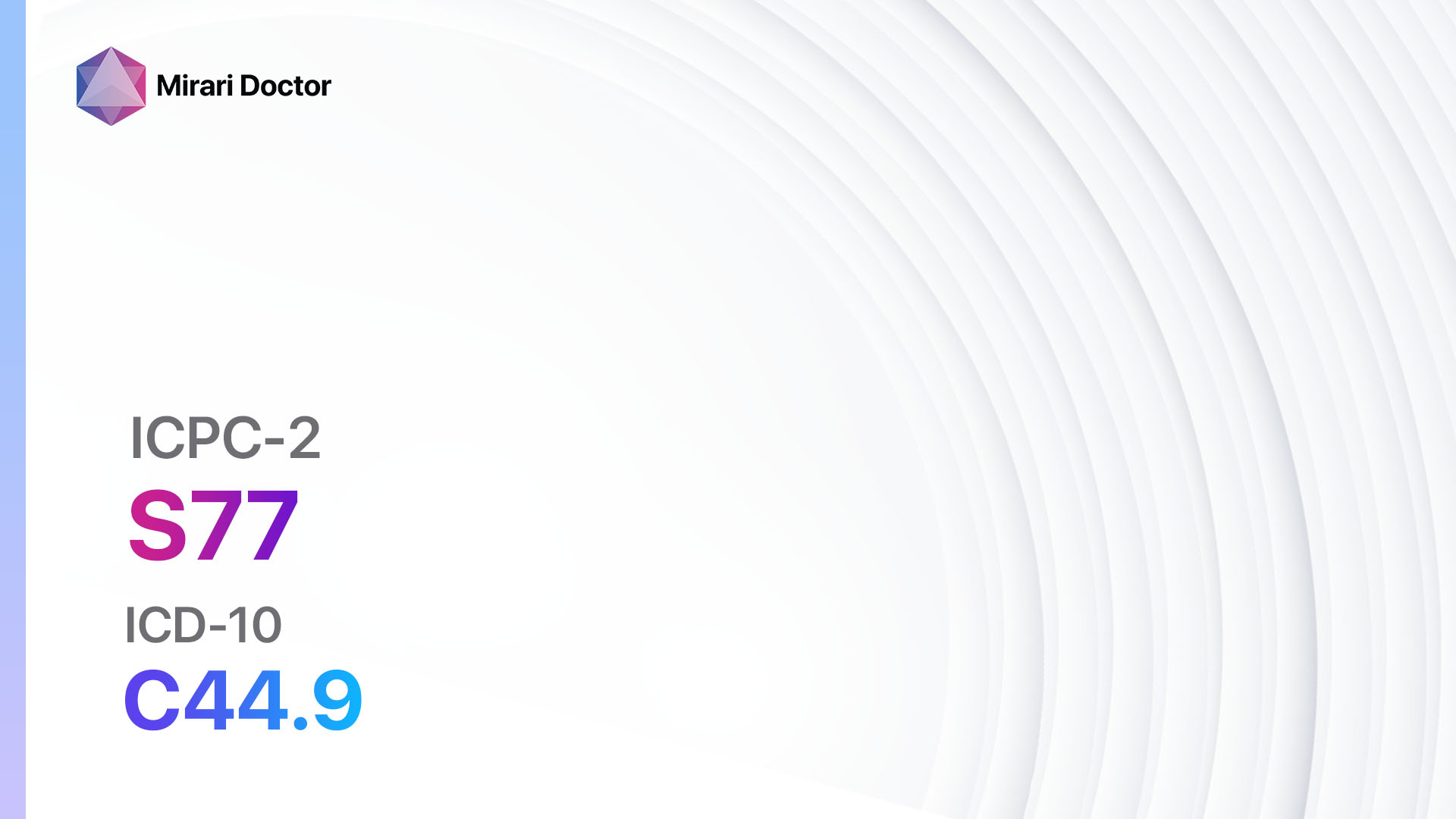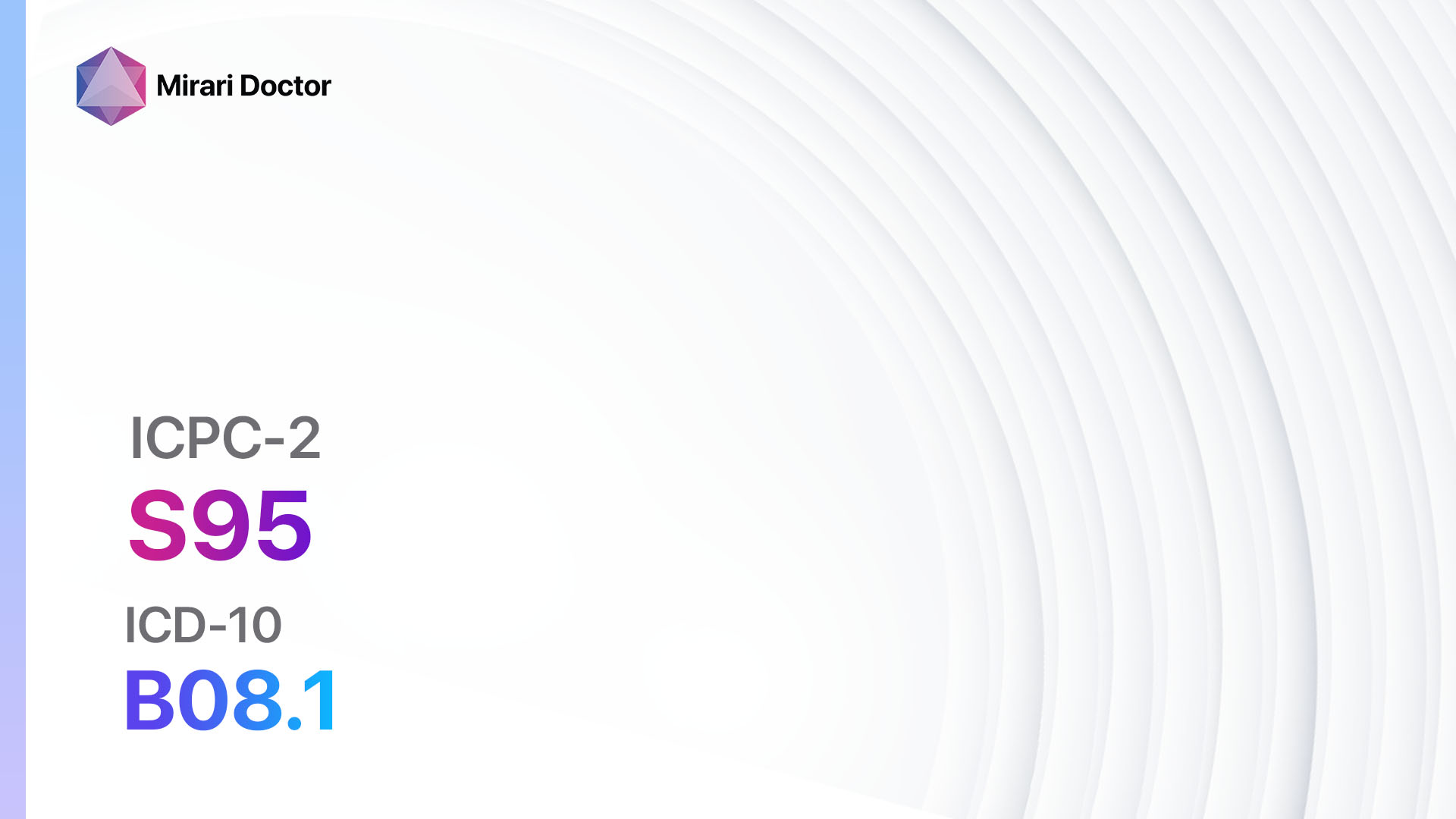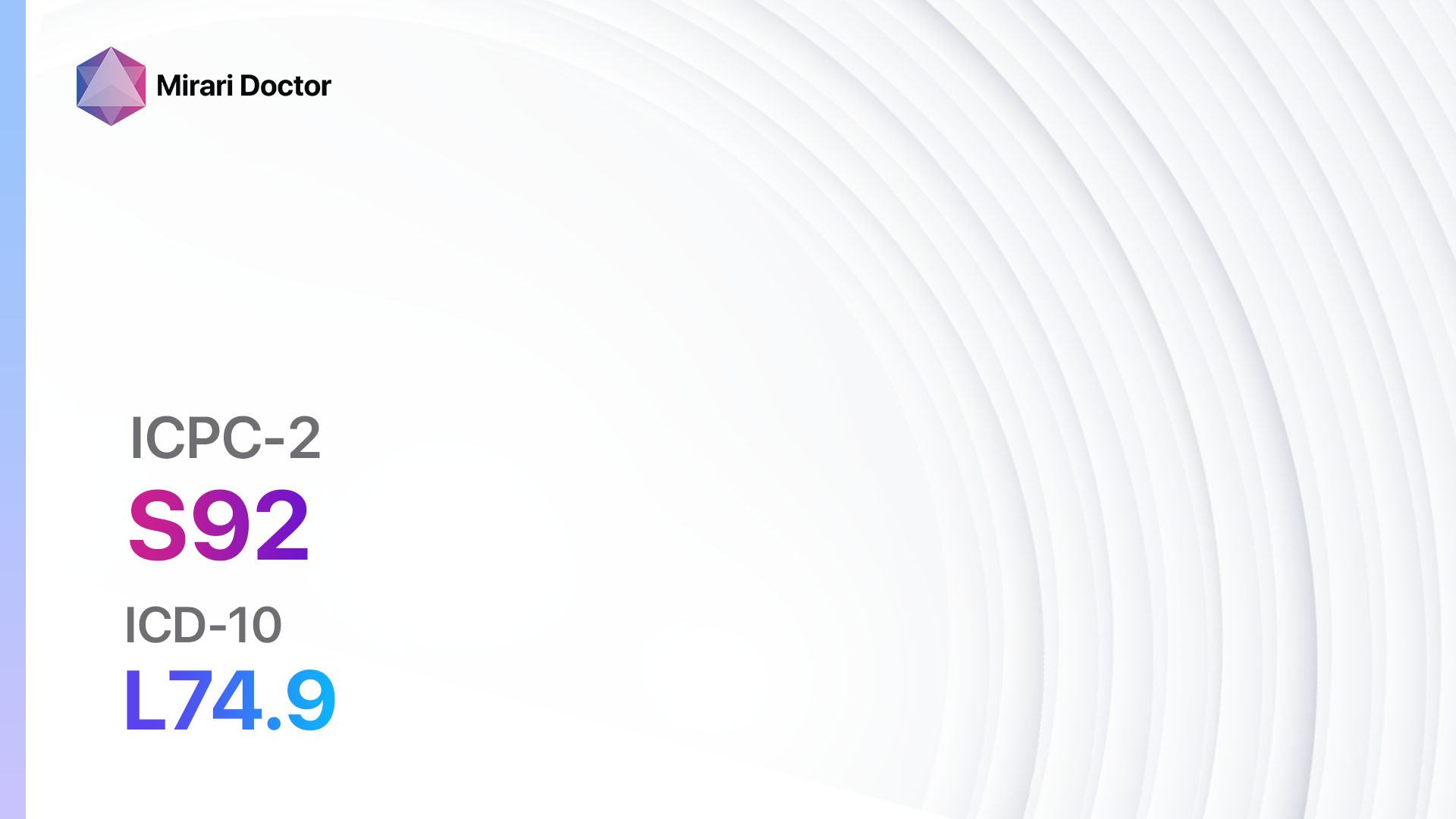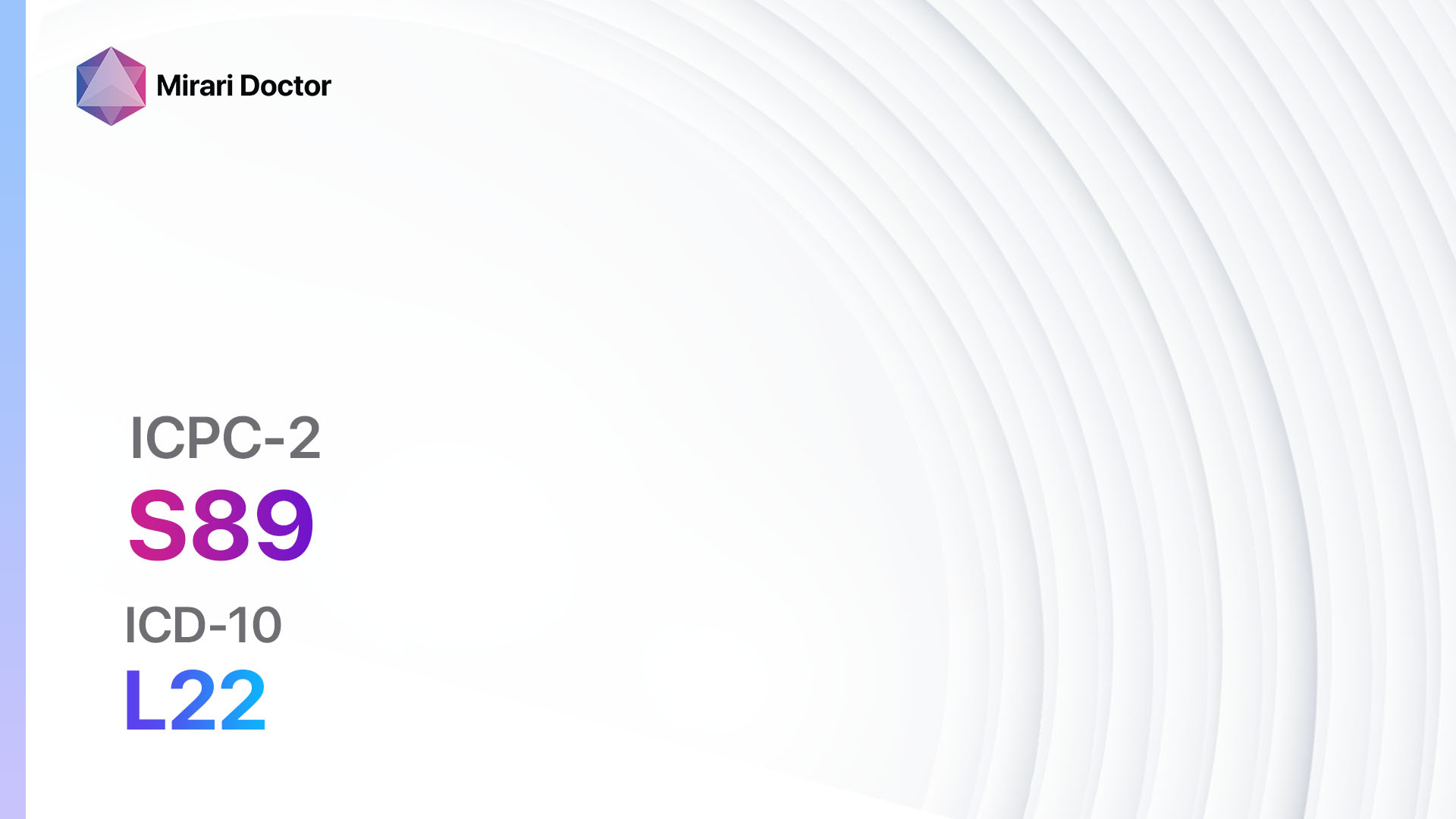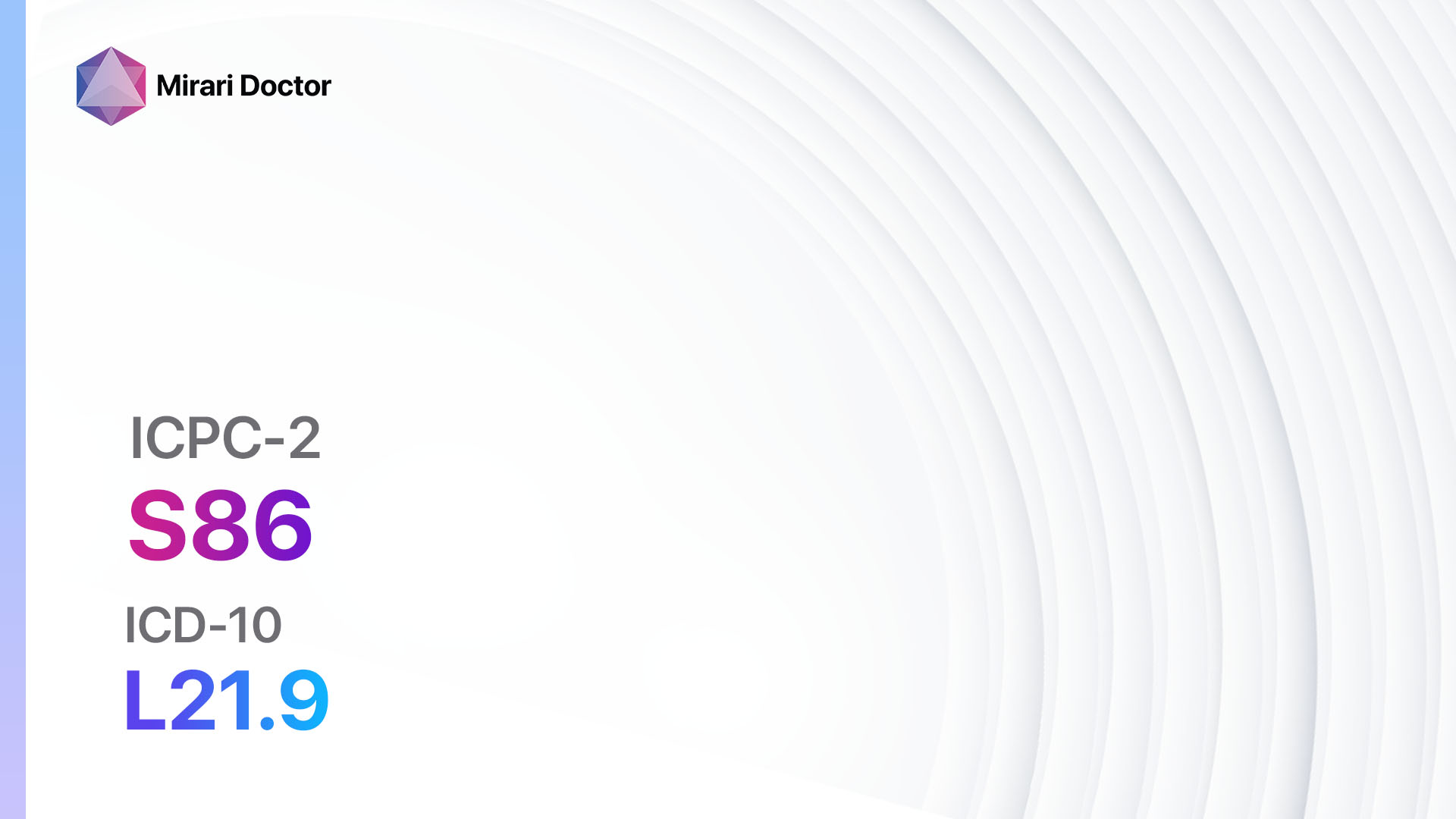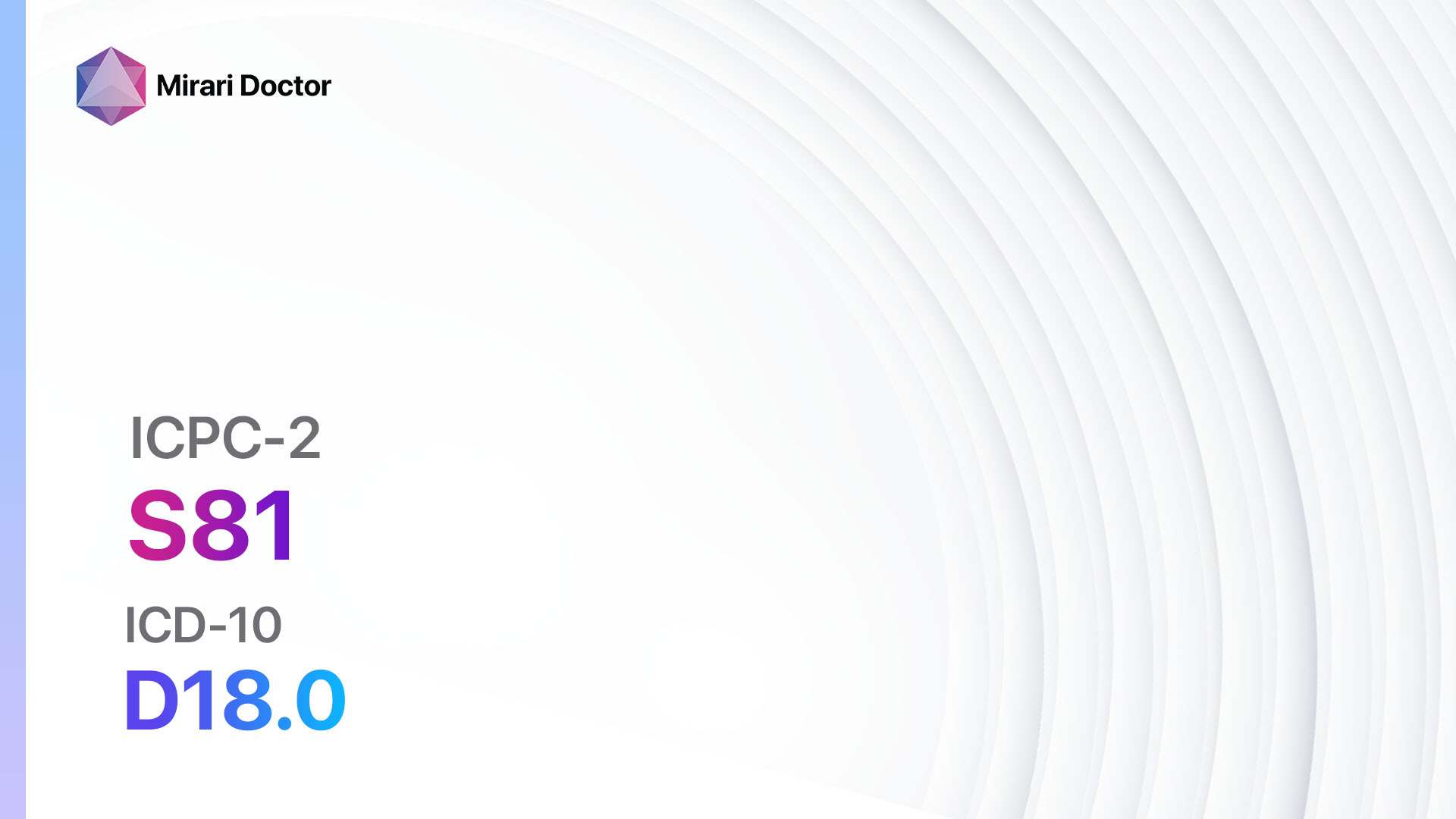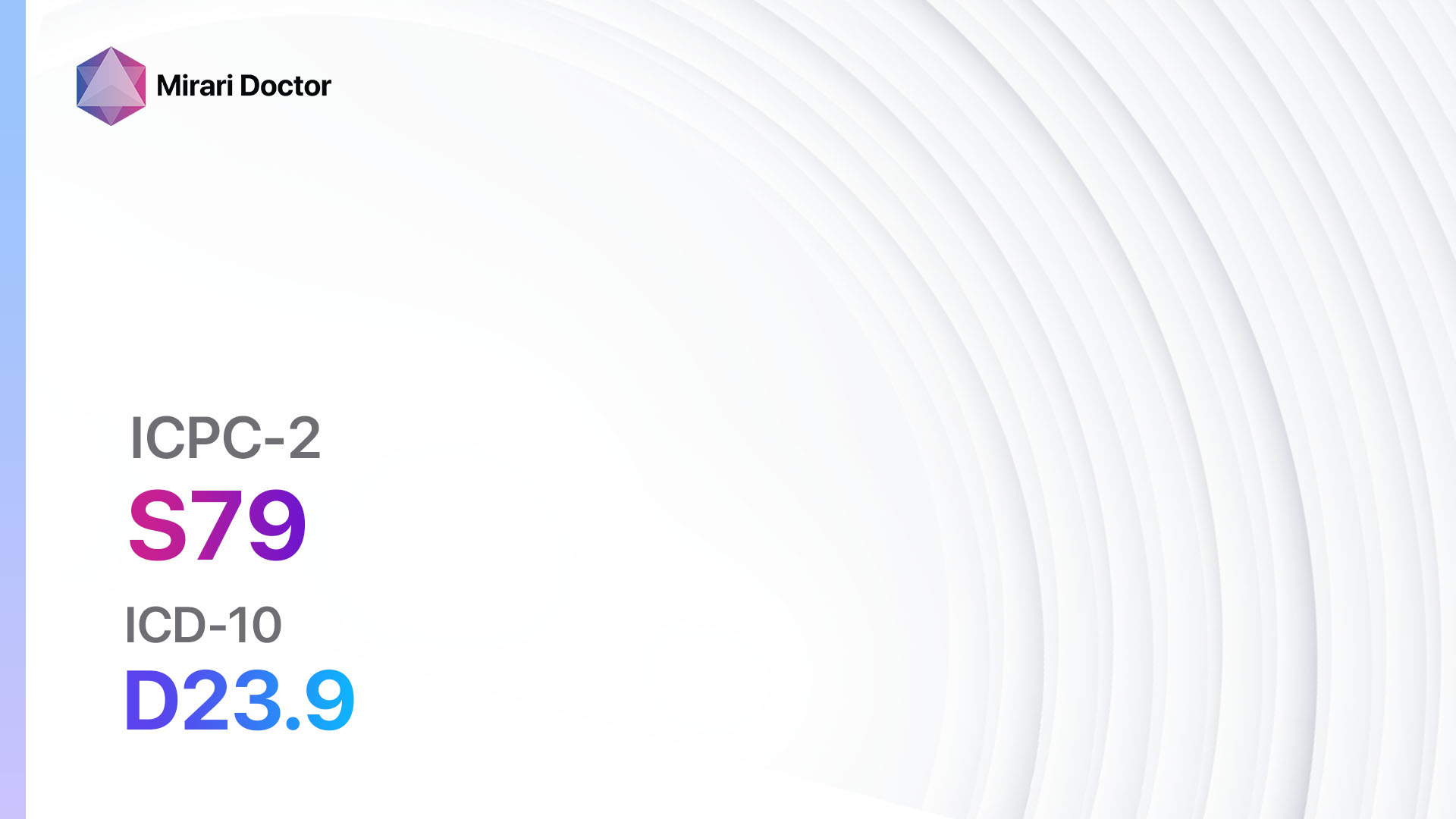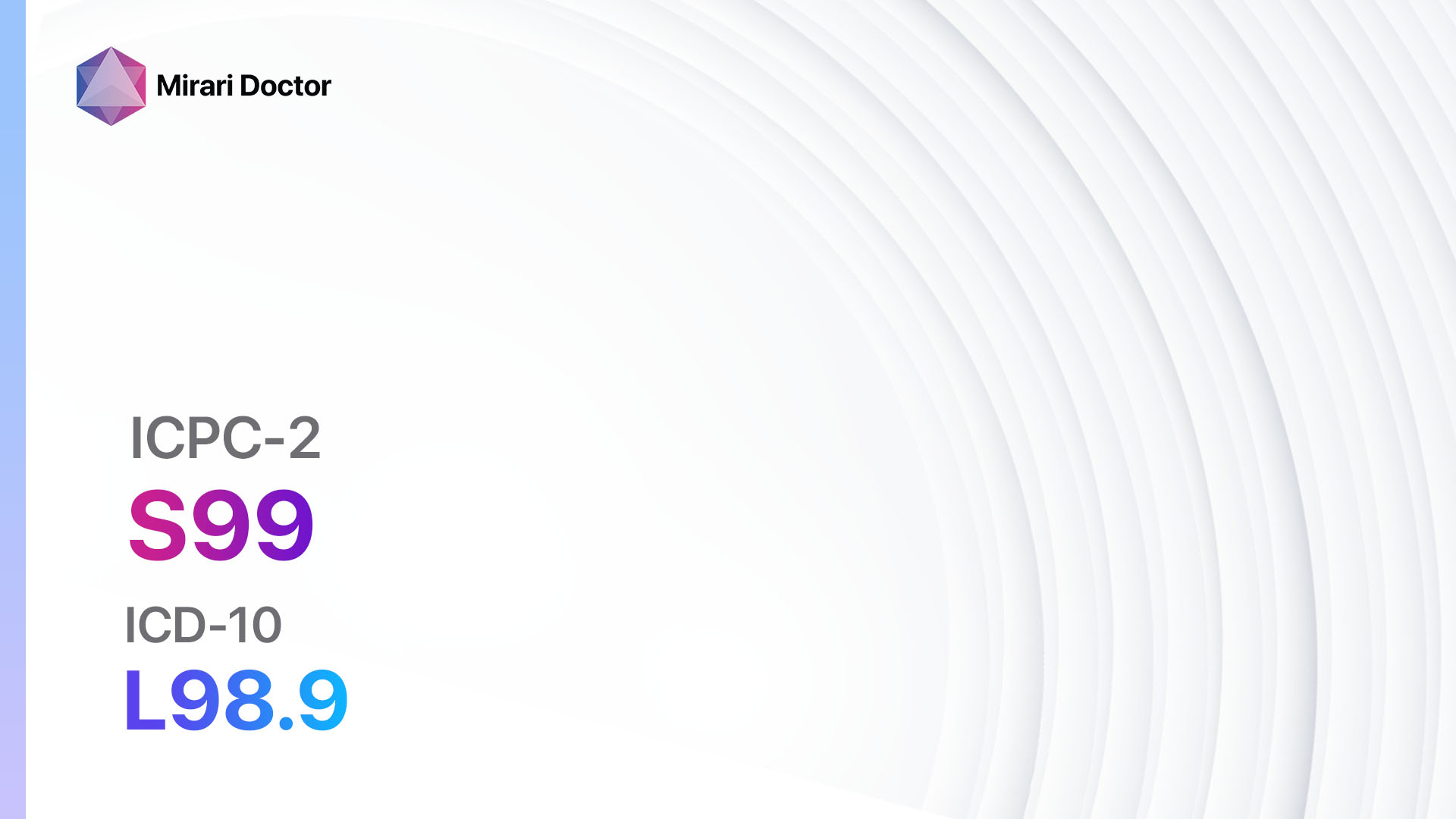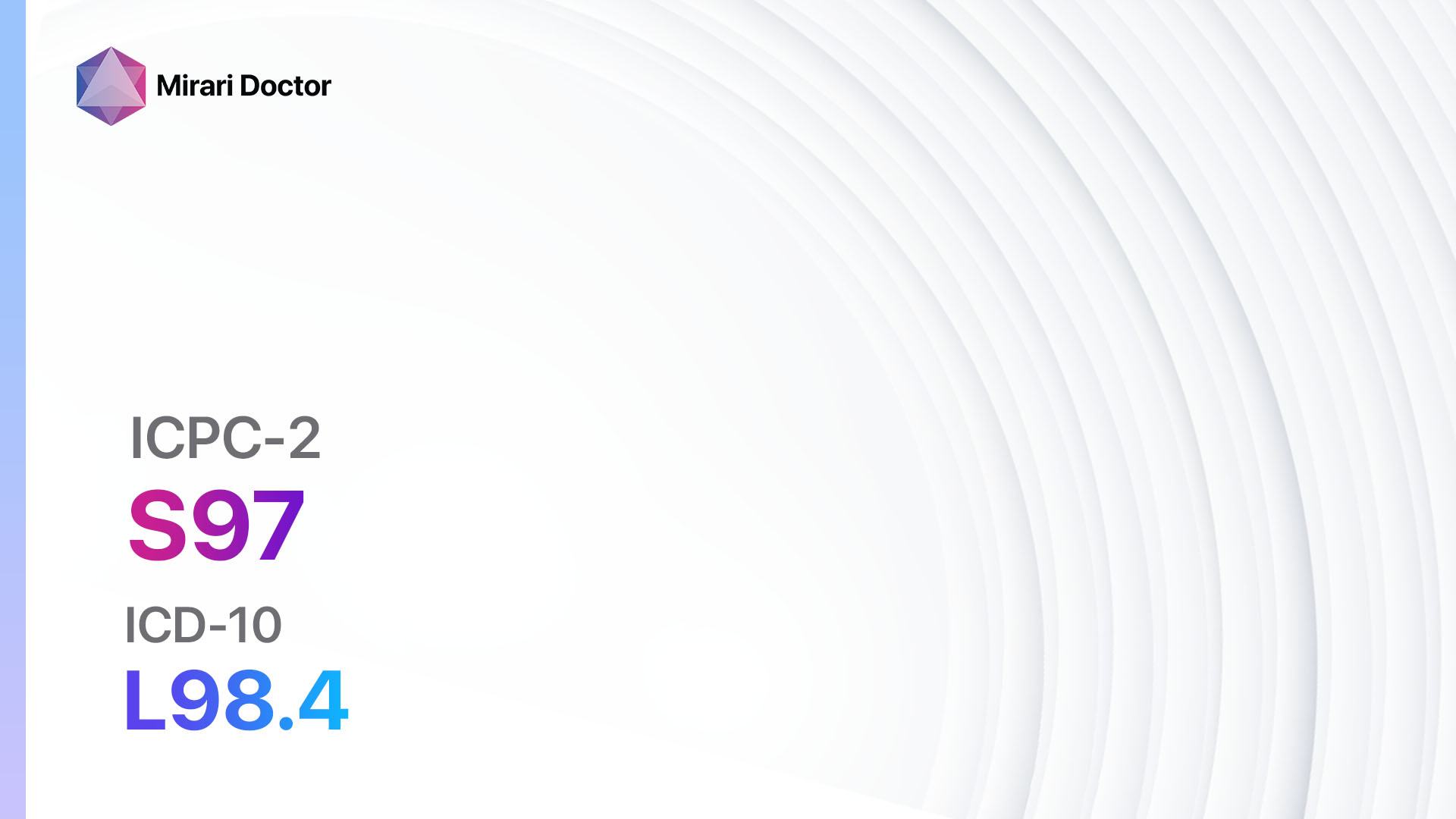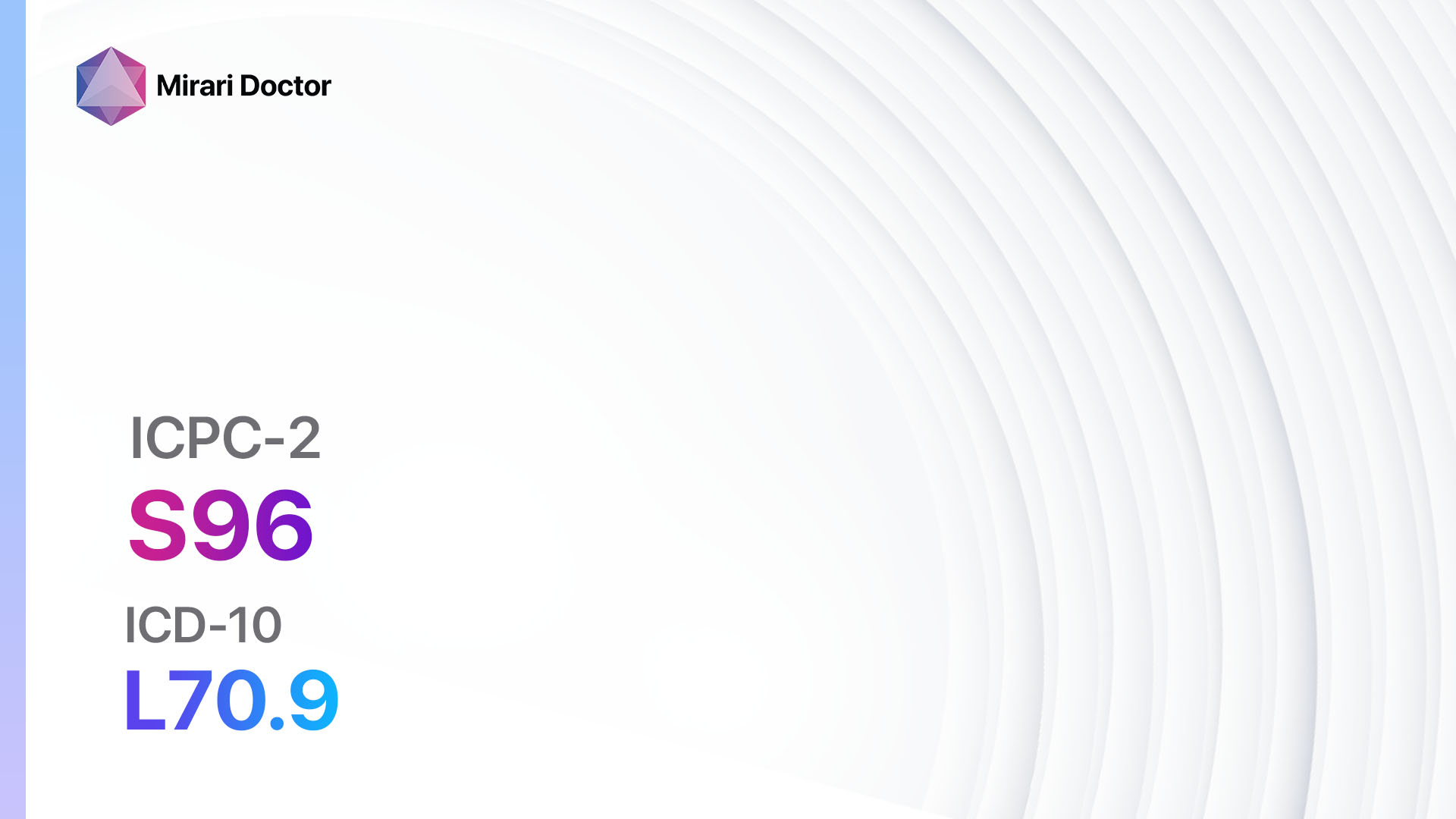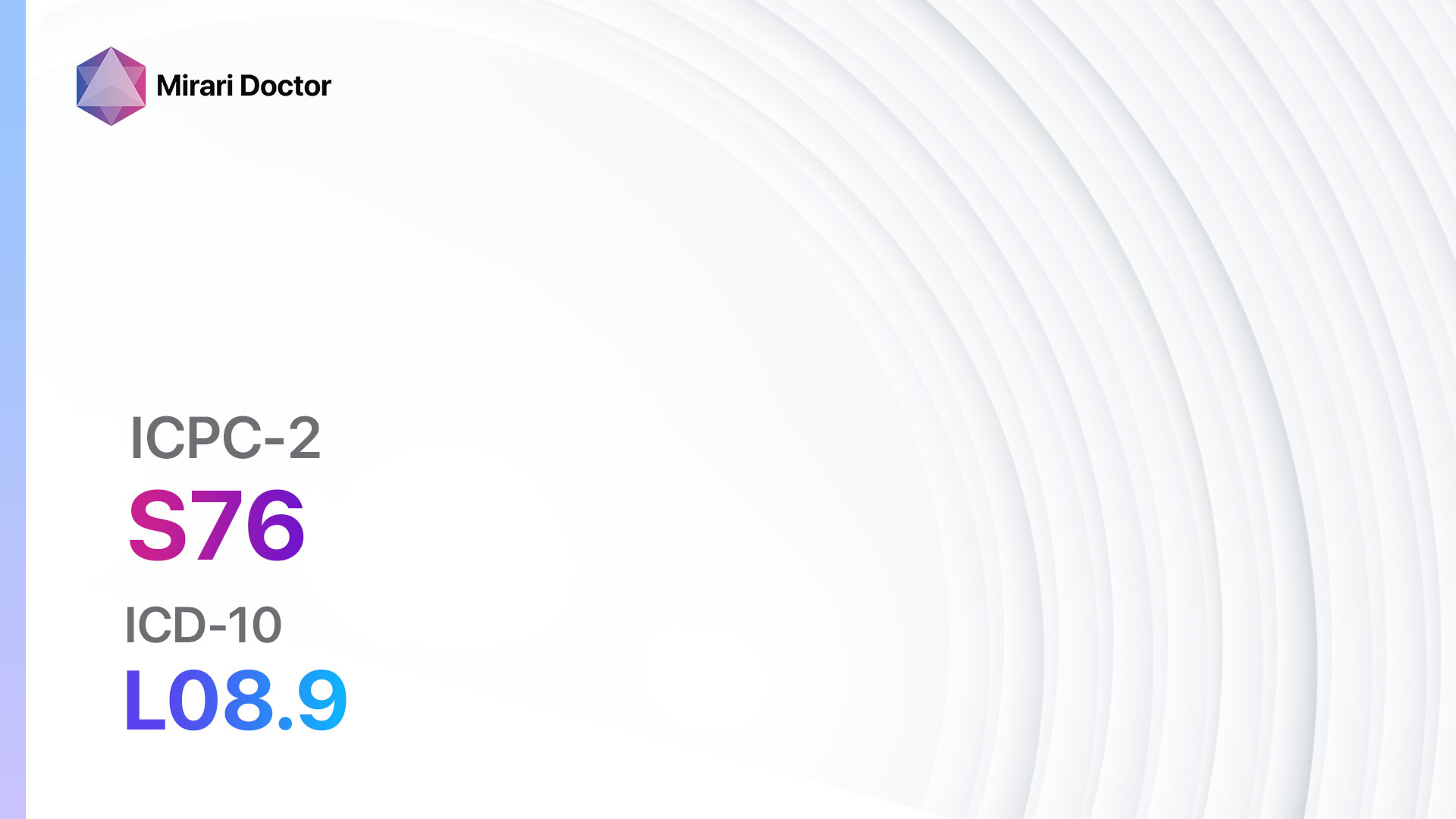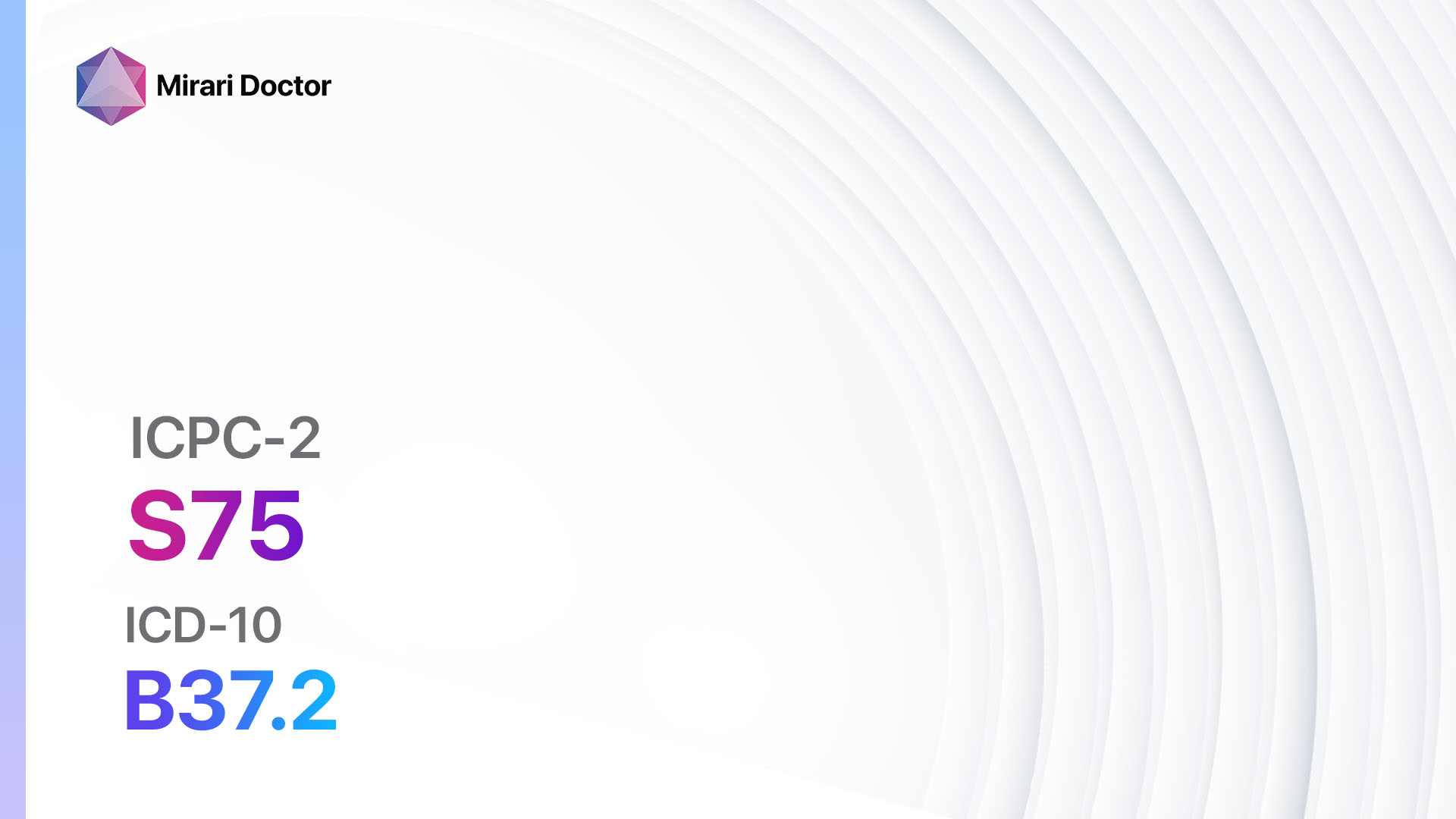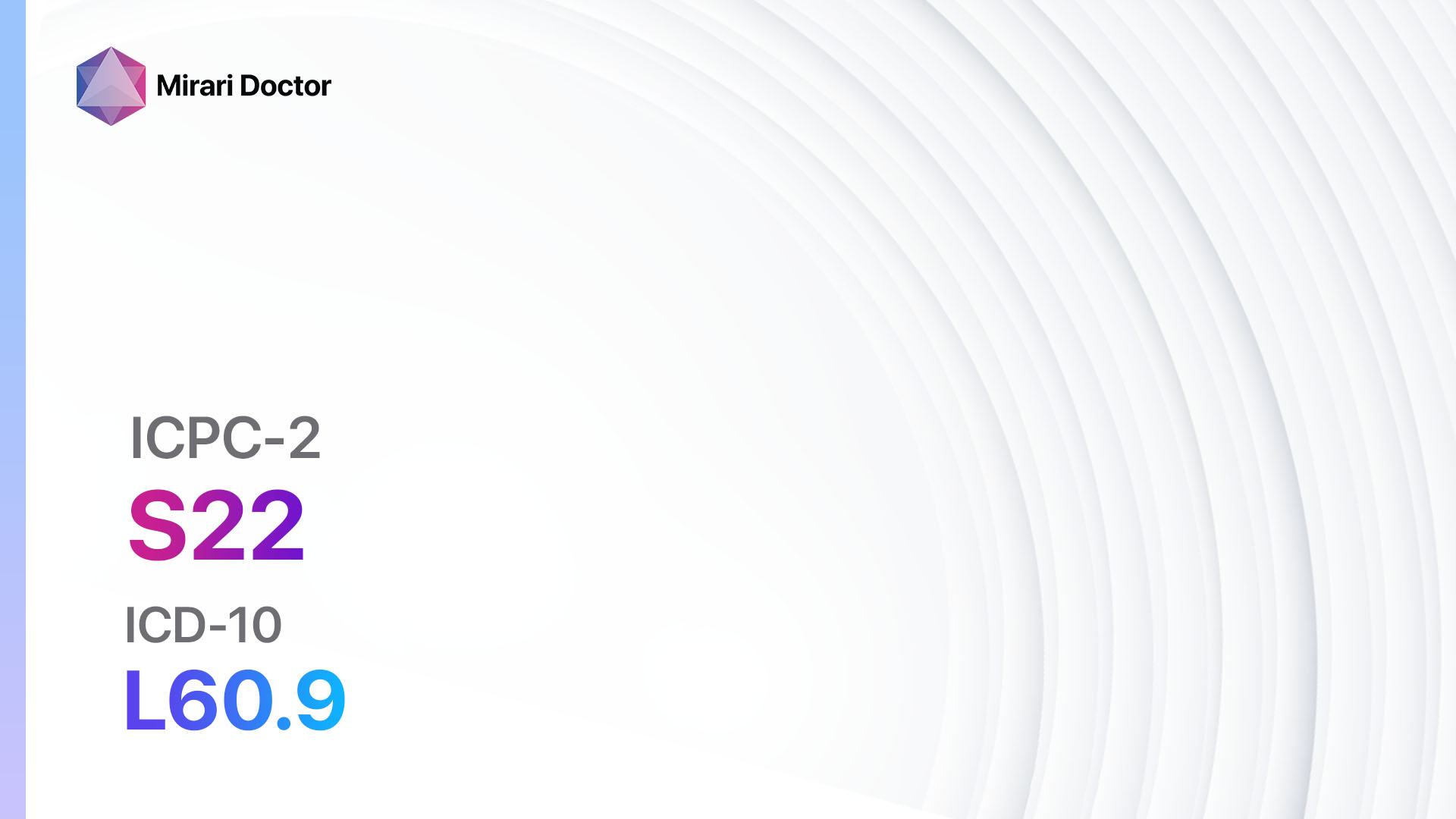
Introduction
Nail symptoms or complaints refer to any abnormal changes or conditions affecting the nails. These symptoms can include discoloration, thickening, brittleness, ridges, pitting, or changes in shape[1]. Nail symptoms may be indicative of underlying health conditions or may be caused by external factors[2]. The aim of this guide is to provide a comprehensive approach to diagnosing and managing nail symptoms.
Codes
Symptoms
- Discoloration: Nails may appear yellow, white, brown, or have patches of different colors[5].
- Thickening: Nails may become thicker than usual[6].
- Brittleness: Nails may become fragile and prone to breaking or splitting[7].
- Ridges: Nails may develop vertical or horizontal ridges[8].
- Pitting: Nails may have small depressions or pits[9].
- Changes in shape: Nails may become spoon-shaped, clubbed, or develop an irregular shape[10].
Causes
- Fungal infection: Fungal infections, such as onychomycosis, can cause discoloration, thickening, and brittleness of the nails.
- Trauma: Injuries to the nails, such as from repetitive trauma or accidents, can lead to nail symptoms.
- Psoriasis: Psoriasis can cause pitting, ridges, and changes in nail shape.
- Systemic diseases: Certain systemic diseases, such as liver disease, kidney disease, or thyroid disorders, can manifest as nail symptoms.
- Nutritional deficiencies: Deficiencies in vitamins, minerals, or protein can affect nail health and lead to symptoms.
- Medications: Some medications can cause nail changes as a side effect.
- External factors: Exposure to chemicals, excessive moisture, or trauma from manicures or pedicures can cause nail symptoms.
Diagnostic Steps
Medical History
- Gather information about the patient’s overall health, including any underlying medical conditions or risk factors.
- Ask about any recent trauma or exposure to chemicals or irritants.
- Inquire about the duration and progression of the nail symptoms.
- Assess the patient’s nutritional status and inquire about any dietary deficiencies.
Physical Examination
- Inspect the nails for any discoloration, thickening, brittleness, ridges, pitting, or changes in shape.
- Examine the surrounding skin for signs of infection or inflammation.
- Palpate the nails and surrounding areas for tenderness or swelling.
- Assess the patient’s overall skin and nail health.
Determine Severity
- Classify the nail symptoms based on severity and depth, if applicable:
- Mild: Minimal nail changes with no functional impairment.
- Moderate: Noticeable nail changes with mild functional impairment.
- Severe: Significant nail changes with significant functional impairment.
Laboratory Tests
- Complete blood count (CBC): To assess for any underlying infections or nutritional deficiencies.
- Fungal culture: To confirm or rule out fungal infection.
- Thyroid function tests: To evaluate thyroid function if systemic disease is suspected.
- Liver function tests: To assess liver health if liver disease is suspected.
- Kidney function tests: To evaluate kidney function if kidney disease is suspected.
- Micronutrient testing: To check for any specific nutritional deficiencies.
Diagnostic Imaging
- X-rays: To assess for any underlying bony abnormalities or trauma.
- Ultrasound: To evaluate the soft tissues and blood flow around the nails.
- MRI: To obtain detailed images of the nails and surrounding structures.
Other Tests
- Nail biopsy: If there is suspicion of a more serious underlying condition, a nail biopsy may be performed to obtain a tissue sample for further analysis.
- Patch testing: If an allergic reaction is suspected, patch testing may be done to identify the specific allergen.
Follow-up and Patient Education
- Schedule follow-up appointments to monitor the progress of treatment and assess any changes in symptoms.
- Provide education to the patient about proper nail care, hygiene, and prevention of nail symptoms.
- Discuss any necessary lifestyle modifications or interventions to improve nail health.
Possible Interventions
Traditional Interventions
Medications:
Top 5 drugs for Nail symptoms/complaints:
- Antifungal medications (e.g., Terbinafine, Fluconazole):
- Cost: Generic versions can range from $10 to $50 for a one-month supply.
- Contraindications: Known hypersensitivity to the medication.
- Side effects: Nausea, diarrhea, rash.
- Severe side effects: Liver damage, allergic reactions.
- Drug interactions: Warfarin, certain antidepressants.
- Warning: Regular liver function tests may be required during treatment.
- Topical corticosteroids (e.g., Betamethasone, Clobetasol):
- Cost: Generic versions can range from $10 to $30 for a one-month supply.
- Contraindications: Skin infections, open wounds.
- Side effects: Skin thinning, irritation, discoloration.
- Severe side effects: Allergic reactions, adrenal suppression.
- Drug interactions: None reported.
- Warning: Prolonged use may lead to skin atrophy.
- Oral antibiotics (e.g., Doxycycline, Minocycline):
- Cost: Generic versions can range from $10 to $50 for a one-month supply.
- Contraindications: Known hypersensitivity to the medication, pregnancy.
- Side effects: Nausea, diarrhea, photosensitivity.
- Severe side effects: Severe allergic reactions, liver damage.
- Drug interactions: Oral contraceptives, antacids.
- Warning: Avoid use in children under 8 years old due to risk of tooth discoloration.
- Immunosuppressants (e.g., Methotrexate, Cyclosporine):
- Cost: Generic versions can range from $10 to $100 for a one-month supply.
- Contraindications: Active infections, liver or kidney disease.
- Side effects: Nausea, vomiting, increased risk of infections.
- Severe side effects: Liver or kidney damage, increased risk of certain cancers.
- Drug interactions: Nonsteroidal anti-inflammatory drugs (NSAIDs), certain antibiotics.
- Warning: Regular monitoring of blood counts and liver/kidney function is required.
- Vitamin and mineral supplements (e.g., Biotin, Iron):
- Cost: Varies depending on the specific supplement.
- Contraindications: Known hypersensitivity to the supplement.
- Side effects: Nausea, upset stomach, constipation.
- Severe side effects: Allergic reactions, iron overload (with iron supplements).
- Drug interactions: None reported.
- Warning: Follow recommended dosage guidelines and consult a healthcare professional before starting any supplements.
Surgical Procedures:
- Nail avulsion: Surgical removal of the affected nail or part of the nail may be necessary in severe cases or if there is an underlying infection that does not respond to conservative treatment.
- Nail biopsy: A nail biopsy may be performed if there is suspicion of a more serious underlying condition that requires further evaluation.
Alternative Interventions
- Acupuncture: May help improve blood flow and reduce pain. Cost: $60-$120 per session.
- Chelation therapy: Controversial treatment involving the administration of chelating agents to remove heavy metals from the body. Cost: $75-$150 per session.
- Hyperbaric oxygen therapy: Involves breathing pure oxygen in a pressurized chamber to increase oxygen delivery to tissues. Cost: $200-$300 per session.
- Herbal supplements: Some herbs, such as tea tree oil or lavender oil, may have potential benefits for nail health. Cost: Varies depending on the specific supplement.
Lifestyle Interventions
- Maintain good nail hygiene: Keep nails clean and dry, trim them regularly, and avoid biting or picking at the nails.
- Protect nails: Wear gloves when working with chemicals or doing activities that may cause trauma to the nails.
- Avoid harsh nail products: Limit the use of nail polish removers or other products that contain harsh chemicals.
- Eat a balanced diet: Ensure an adequate intake of vitamins, minerals, and protein for optimal nail health.
- Manage underlying health conditions: Properly manage any underlying medical conditions, such as diabetes or psoriasis, that may affect nail health.
It is important to note that the cost ranges provided are approximate and may vary depending on the location and availability of the interventions.
Mirari Cold Plasma Alternative Intervention
Understanding Mirari Cold Plasma
- Safe and Non-Invasive Treatment: Mirari Cold Plasma is a safe and non-invasive treatment option for various skin conditions. It does not require incisions, minimizing the risk of scarring, bleeding, or tissue damage.
- Efficient Extraction of Foreign Bodies: Mirari Cold Plasma facilitates the removal of foreign bodies from the skin by degrading and dissociating organic matter, allowing easier access and extraction.
- Pain Reduction and Comfort: Mirari Cold Plasma has a local analgesic effect, providing pain relief during the treatment, making it more comfortable for the patient.
- Reduced Risk of Infection: Mirari Cold Plasma has antimicrobial properties, effectively killing bacteria and reducing the risk of infection.
- Accelerated Healing and Minimal Scarring: Mirari Cold Plasma stimulates wound healing and tissue regeneration, reducing healing time and minimizing the formation of scars.
Mirari Cold Plasma Prescription
Video instructions for using Mirari Cold Plasma Device – S22 Nail symptom/complaint (ICD-10:L60.9)
| Mild | Moderate | Severe |
| Mode setting: 1 (Infection) Location: 0 (Localized) Morning: 15 minutes, Evening: 15 minutes |
Mode setting: 1 (Infection) Location: 0 (Localized) Morning: 30 minutes, Lunch: 30 minutes, Evening: 30 minutes |
Mode setting: 1 (Infection) Location: 0 (Localized) Morning: 30 minutes, Lunch: 30 minutes, Evening: 30 minutes |
| Mode setting: 10 (Dermatitis/Fungus) Location: 0 (Localized) Morning: 15 minutes, Evening: 15 minutes |
Mode setting: 10 (Dermatitis/Fungus) Location: 0 (Localized) Morning: 30 minutes, Lunch: 30 minutes, Evening: 30 minutes |
Mode setting: 10 (Dermatitis/Fungus) Location: 0 (Localized) Morning: 30 minutes, Lunch: 30 minutes, Evening: 30 minutes |
| Total Morning: 30 minutes approx. $5 USD, Evening: 30 minutes approx. $5 USD |
Total Morning: 60 minutes approx. $10 USD, Lunch: 60 minutes approx. $10 USD, Evening: 60 minutes approx. $10 USD |
Total Morning: 60 minutes approx. $10 USD, Lunch: 60 minutes approx. $10 USD, Evening: 60 minutes approx. $10 USD |
| Usual treatment for 7-60 days approx. $70 USD – $600 USD | Usual treatment for 6-8 weeks approx. $1,260 USD – $1,680 USD | Usual treatment for 3-6 months approx. $2,700 USD – $5,400 USD |
 |
|
Use the Mirari Cold Plasma device to treat Nail symptom/complaint effectively.
WARNING: MIRARI COLD PLASMA IS DESIGNED FOR THE HUMAN BODY WITHOUT ANY ARTIFICIAL OR THIRD PARTY PRODUCTS. USE OF OTHER PRODUCTS IN COMBINATION WITH MIRARI COLD PLASMA MAY CAUSE UNPREDICTABLE EFFECTS, HARM OR INJURY. PLEASE CONSULT A MEDICAL PROFESSIONAL BEFORE COMBINING ANY OTHER PRODUCTS WITH USE OF MIRARI.
Step 1: Cleanse the Skin
- Start by cleaning the affected area of the skin with a gentle cleanser or mild soap and water. Gently pat the area dry with a clean towel.
Step 2: Prepare the Mirari Cold Plasma device
- Ensure that the Mirari Cold Plasma device is fully charged or has fresh batteries as per the manufacturer’s instructions. Make sure the device is clean and in good working condition.
- Switch on the Mirari device using the power button or by following the specific instructions provided with the device.
- Some Mirari devices may have adjustable settings for intensity or treatment duration. Follow the manufacturer’s instructions to select the appropriate settings based on your needs and the recommended guidelines.
Step 3: Apply the Device
- Place the Mirari device in direct contact with the affected area of the skin. Gently glide or hold the device over the skin surface, ensuring even coverage of the area experiencing.
- Slowly move the Mirari device in a circular motion or follow a specific pattern as indicated in the user manual. This helps ensure thorough treatment coverage.
Step 4: Monitor and Assess:
- Keep track of your progress and evaluate the effectiveness of the Mirari device in managing your Nail symptom/complaint. If you have any concerns or notice any adverse reactions, consult with your health care professional.
Note
This guide is for informational purposes only and should not replace the advice of a medical professional. Always consult with your healthcare provider or a qualified medical professional for personal advice, diagnosis, or treatment. Do not solely rely on the information presented here for decisions about your health. Use of this information is at your own risk. The authors of this guide, nor any associated entities or platforms, are not responsible for any potential adverse effects or outcomes based on the content.
Mirari Cold Plasma System Disclaimer
- Purpose: The Mirari Cold Plasma System is a Class 2 medical device designed for use by trained healthcare professionals. It is registered for use in Thailand and Vietnam. It is not intended for use outside of these locations.
- Informational Use: The content and information provided with the device are for educational and informational purposes only. They are not a substitute for professional medical advice or care.
- Variable Outcomes: While the device is approved for specific uses, individual outcomes can differ. We do not assert or guarantee specific medical outcomes.
- Consultation: Prior to utilizing the device or making decisions based on its content, it is essential to consult with a Certified Mirari Tele-Therapist and your medical healthcare provider regarding specific protocols.
- Liability: By using this device, users are acknowledging and accepting all potential risks. Neither the manufacturer nor the distributor will be held accountable for any adverse reactions, injuries, or damages stemming from its use.
- Geographical Availability: This device has received approval for designated purposes by the Thai and Vietnam FDA. As of now, outside of Thailand and Vietnam, the Mirari Cold Plasma System is not available for purchase or use.
References
- Singal, A., & Arora, R. (2015). Nail as a window of systemic diseases. Indian Dermatology Online Journal, 6(2), 67-74.
- Cashman, M. W., & Sloan, S. B. (2010). Nutrition and nail disease. Clinics in Dermatology, 28(4), 420-425.
- WONCA International Classification Committee. (1998). ICPC-2: International Classification of Primary Care. Oxford University Press, USA.
- World Health Organization. (2019). International Statistical Classification of Diseases and Related Health Problems (11th ed.).
- Fawcett, R. S., Linford, S., & Stulberg, D. L. (2004). Nail abnormalities: clues to systemic disease. American Family Physician, 69(6), 1417-1424.
- Wollina, U. (2016). Onychogryphosis. Our Dermatology Online, 7(3), 317-319.
- Colombo, V. E., Gerber, F., Bronhofer, M., & Floersheim, G. L. (1990). Treatment of brittle fingernails and onychoschizia with biotin: scanning electron microscopy. Journal of the American Academy of Dermatology, 23(6), 1127-1132.
- Grover, C., Khurana, A., Jain, R., & Rathi, V. (2013). Transverse leukonychia: a case report and review of the literature. Indian Journal of Dermatology, 58(5), 409.
- Klaassen, K. M., van de Kerkhof, P. C., & Pasch, M. C. (2013). Nail psoriasis: a questionnaire-based survey. British Journal of Dermatology, 169(2), 314-319.
- Baran, R., & Dawber, R. P. (Eds.). (2008). Baran and Dawber’s diseases of the nails and their management. John Wiley & Sons.
Related articles
Made in USA



